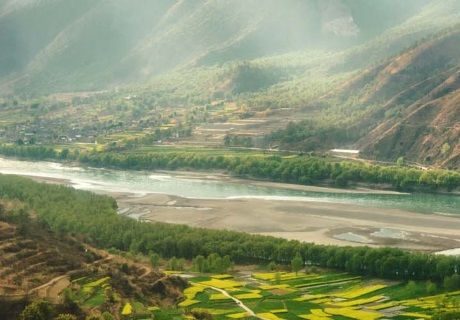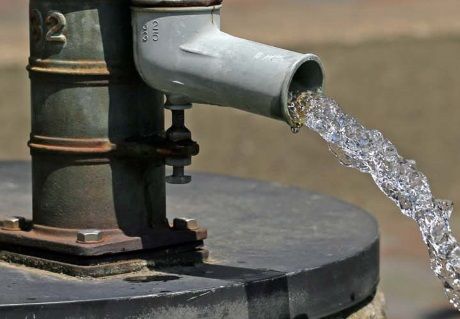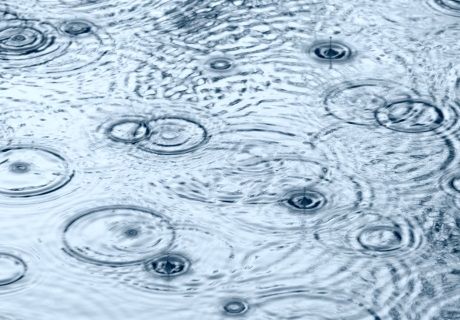ArDB & Meteorology
ArDB is supplied with a snapshot of the Global Isotopes in Precipitation database* (GNIP). This database conatins the stable hydrogen and oxygen isotope ratio and tritium content of precipitation from around the globe since 1961 and is coordianted by the International Atmoic Energy Agency (IAEA) and the World Metorological Organization (WHO). The database supplied with ArDB contains almost 130,000 individual sample results making it probably the largest database of stable isotope results in the world. Whilst the original motivation for the database was to monitor atmospheric thermonuclear test fallout, it found multiple applicatations in hydrology, meteorology, climatology, oceanography and limnology. More recently, the database has formed a crucial backbone of ecology, food authenticity and traceablility as well as other forensic approaches.
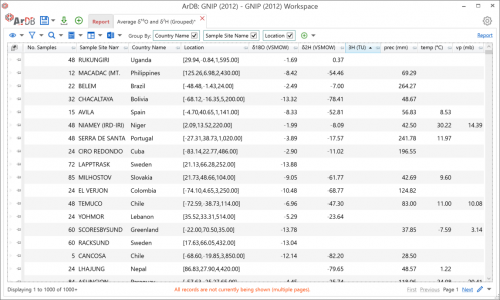
ArDB is designed to work with any number of sample data points and it performs calculations with lightening speed. To make the handling of such large data sets simple, ArDB is able to easily group data by any category that you like. For example, the GNIP database can be easily grouped by Country Name, Location, Year, Year and Month, etc... When performing grouping, ArDB instantly aggregates results to give the average value of all data points in the group making it easy to investigate your data.
Once you have grouped your data, you can easily navigate to the subset of results by using the right mouse button navigation.
Plot the Global Meteoric Water Line
With a database of oxygen and hydrogen stable isotope ratios in preciptiation from all over the globe, it is possible to construct the Global Metoric Water Line (GMWL). This then provides a baseline for evalutating how the relationship of oxygen and hydrogen ratios vary locally as a result of localized isotope fractionation processes by constructing a Local Meteoric Water Line (LMWL). ArDB makes it very simple to constuct the GMWL and to evaluate the relationship with the LMWL.
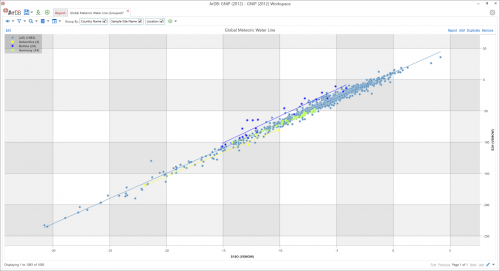
Develop an Isoscape
When plotting the GNIP database on the map it is possible to see how the oxygen and hydrogen isotope ratios vary over the globe. This visualization shows clearly how the isotopic enrichment of oxygen and hydrogen in precipitation is a function of it's latitute. Isotopically enriched values are found at equitorial latitiudes whilst isotopically depleted values are found at polar regions. With the discrete sample points plotted on the map ArDB is able to interpolate between the discrete sampling points to predict isotopic values resulting in what is commonly known as an "isoscape".
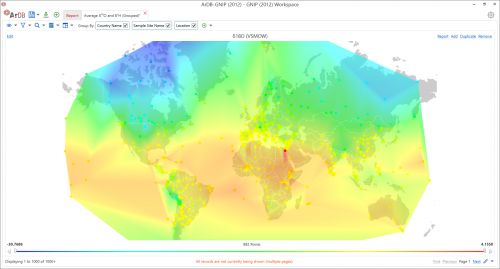
Investigate temporal variations
The GNIP database contains sample results dating back to 1961 and so is a precious archive of environmental change. ArDB allows temporal variations to be discovered by using the Smart Date feature. By using Smart Date, data points can be rendered by any time interval and stepped through in sequence. For example, seasonal variations in 18O between winter and summer can be seen clearly by the redder colors indicating isotopically enriched 18O in the summer and bluer colors indicating isotopically depleted 18O in the winter.
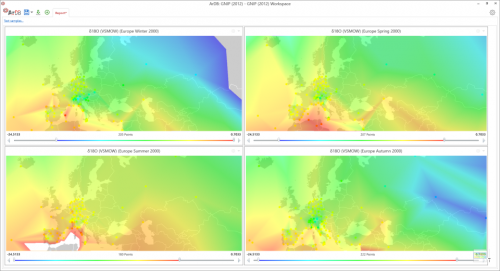
Use different chart styles
The GNIP database contains a wealth of data and being able to visualize the data anyway you choose helps you get to the information that you need. ArDB allows you to plot scatter, line, column and area charts and overlay them with ease.
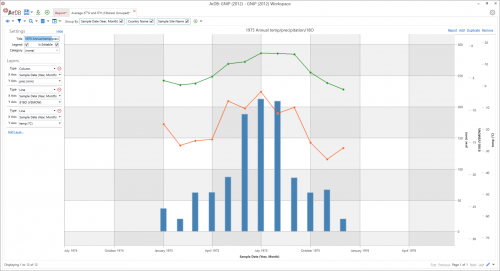
* ArDB is supplied with a snapshot of the GNIP database up unto 2012. More recent data can be downloaded from the IAEA website [see here]
Stable isotope instrumentation
Elementar is a world leading manufacturer of stable isotope ratio mass spectrometers with a complete portfolio of peripheral inlet systems and we support an array of systems that offer the anlaysis and liquids. The correct choice of instrumentation depends on the type of liquid sample that you wish to analyse, the purity of that sample and the isotopic precision which your research demands. Meterological samples such as rain water or snow fall are relatively pure and so it is possible to analyze these type of samples via a direct combustion technique with an Elemental Analyzer. Ground waters from the vadose zone have much greater risk of organic contamination which would skew the isotopic ratio if measured via direct combustion and so should be measured via an indirect headspace equilibration technique. This technique can be performed in two ways; either via "continuous flow" or "dual inlet". Continuous flow achieves high sample throughput and allows chomatographic separation of any contaminant able to escape from the sample vial, but the achievable isotopic precision is not as high as that which can be achieved via the dual inlet which is the gold standard in isotopic measurement of liquid samples.
iso FLOW Gas & Headspace Analyzer
iso FLOW is an automated sampling system which is able analyse the 18O and 2H isotope ratio of liquid samples such as precipitation, groundwater and marine waters.

vario PYRO cube Elemental Analyzer
The vario PYRO cube is a high temperature system which can be equipped with the vario LIQUID sampler for 18O and 2H analysis of pure waters such as rain water, snow fall and ice cores.

iso DUAL inlet
The iso DUAL inlet is a high performance instrument which offers the highest achievable instrumental precision for 18O isotope measurements of liquid samples.

